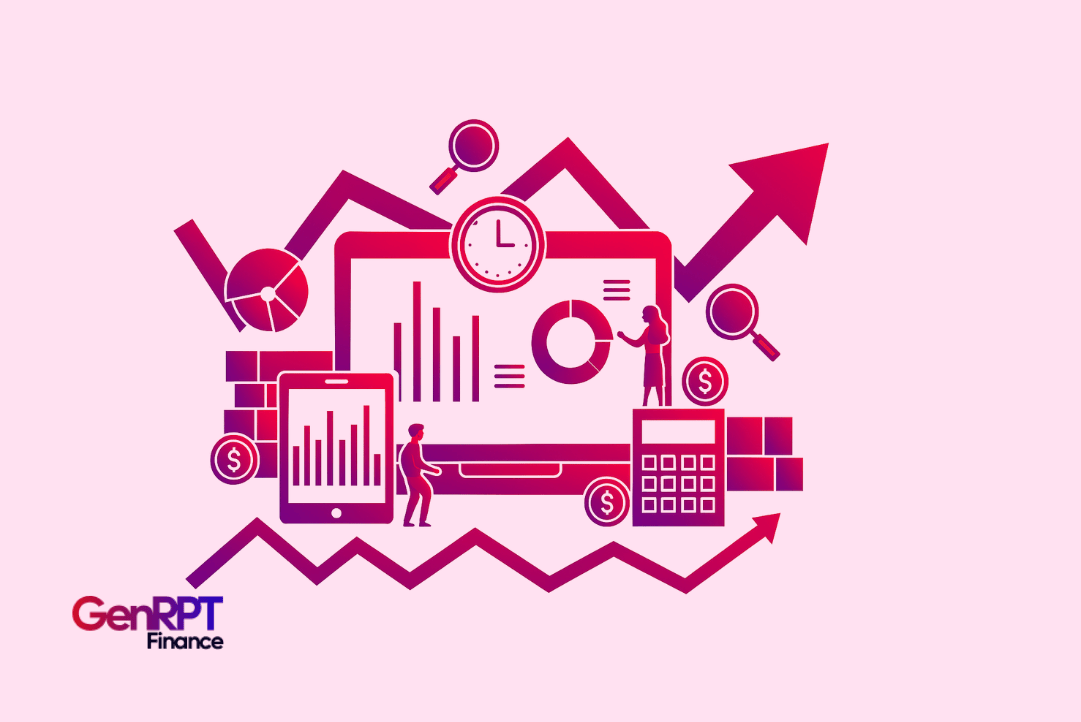
Why Financial Reports Confuse Readers | GenRPT Finance
October 10, 2025 | By GenRPT Finance
Financial reports are vital tools for making smart investment decisions, yet they often confuse even experienced professionals. Portfolio managers, investment analysts, and financial advisors regularly deal with pages of numbers, ratios, and technical terms that don’t always reveal the complete story.
At GenRPT Finance, we simplify this process. Our platform uses AI for data analysis and equity research automation to make complex financial data easier to understand, helping professionals read between the lines and uncover what truly matters.
Why Financial Reports Feel Complicated
Companies release reports to show how their business is performing, typically including the income statement, balance sheet, and cash flow statement. While these documents are informative, they often pose challenges:
1. Too much technical language
2. Dense tables filled with numbers
3. Limited explanations for changes
4. Hard-to-compare figures across periods or industries
5. Little insight into overall risk
For newcomers, these documents can feel overwhelming. Even experts find that most reports lack context, such as macroeconomic outlook shifts or variations in geographic exposure, that are essential for deeper risk analysis.
What to Focus On
You don’t need to read every line of a report. Instead, focus on the sections that reveal the company’s true performance.
1. Income Statement
This report shows whether the company is generating profit. Look at:
-
Revenue growth
-
Operating margin
-
Net income
Ask: Is revenue growing sustainably? Are expenses controlled? Is profitability improving over time?
2. Balance Sheet
The balance sheet explains a company’s financial structure. Key indicators include:
-
Total assets and liabilities
-
Debt-to-equity ratio
-
Book value
Check whether debt levels are manageable and how much leverage the company uses. This helps with financial risk assessment.
3. Cash Flow Statement
This report shows where money is coming from and where it’s going:
-
Operating cash flow
-
Investing cash flow
-
Financing cash flow
Positive operating cash flow usually signals strong fundamentals, while consistent negative cash flow may warrant deeper equity analysis.
Understanding the Real Story
Numbers alone don’t tell the full story. You need to interpret them in context. For example:
-
A drop in revenue might be acceptable if it matches broader market trends.
-
High debt could be healthy if used for strategic growth.
-
Strong profits might not last if market risk analysis indicates an upcoming downturn.
That’s why equity research reports exist, to translate data into insights. These reports summarize complex information, highlight risks, and guide investment decisions. For financial consultants, wealth managers, and asset managers, they are indispensable for portfolio risk assessment.
The Role of Equity Research
Equity research digs deeper than surface-level numbers. Analysts examine management quality, market positioning, regulatory shifts, and economic trends. The goal is to create data-backed insights that inform investment decisions.
Through GenRPT Finance, these insights are automated. The platform combines structured data analysis, AI-driven summarization, and risk monitoring to help professionals make faster, smarter choices.
It supports financial data analysts, wealth advisors, and portfolio managers by turning reports into clear recommendations — identifying what to buy, hold, or sell.
How AI Makes This Easier
Manual financial analysis takes hours, formatting spreadsheets, writing summaries, and comparing data. AI for equity research reduces that burden.
Here’s how GenRPT Finance uses automation to simplify the process:
1. Generates concise earnings summaries automatically.
2. Highlights unusual patterns like expense spikes or revenue drops.
3. Flags potential red flags for financial risk mitigation.
4. Compares data across quarters or between competitors.
5. Builds visual dashboards for trend recognition.
For investment analysts and financial advisors, this means less time on data preparation and more time for strategic decision-making.
Common Mistakes to Avoid
When reading financial reports, many professionals still make these errors:
1. Focusing only on revenue growth without checking margins
2. Ignoring footnotes that reveal important changes
3. Overlooking macroeconomic outlook and external conditions
4. Comparing data without adjusting for seasonal trends
5. Missing early signs of risk such as rising debt or declining cash flow
Avoiding these mistakes can drastically improve risk assessment and portfolio outcomes.
How to Read Financial Reports with Confidence
Whether you’re new to finance or managing large portfolios, this simple plan can help:
-
Start with the income statement – focus on growth and profitability.
-
Move to the balance sheet – assess leverage and liquidity.
-
Review the cash flow statement – confirm that profits translate into real cash.
-
Use financial ratios like P/E, ROE, and current ratio to compare performance.
-
Read management commentary for insights into market conditions.
-
Leverage equity research automation tools to speed up data review.
-
Account for external risks such as inflation, regulations, or geopolitical shifts.
By following this structure, financial data becomes more meaningful and actionable.
Conclusion
Financial reports often look complicated, but they tell a powerful story when read correctly. By focusing on the key sections, connecting the dots with market context, and using tools like AI for data analysis, anyone can interpret reports with confidence.
At GenRPT Finance, our goal is to make this process effortless. Our AI-powered equity research platform generates comprehensive, accurate, and insightful financial summaries within minutes. It helps professionals move beyond manual analysis to focus on what truly matters, smarter, faster investment decisions.
If you’re ready to decode financial data and improve decision accuracy, let GenRPT Finance guide you. Learn the fundamentals, and let AI handle the rest.
